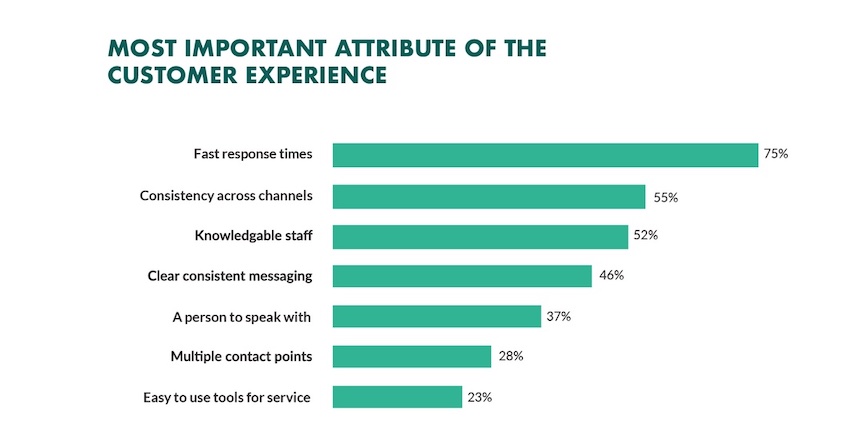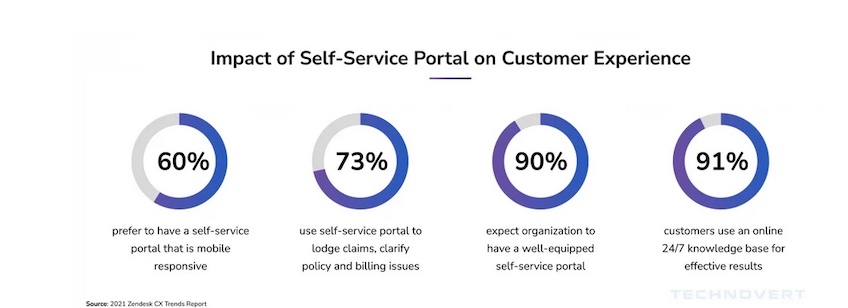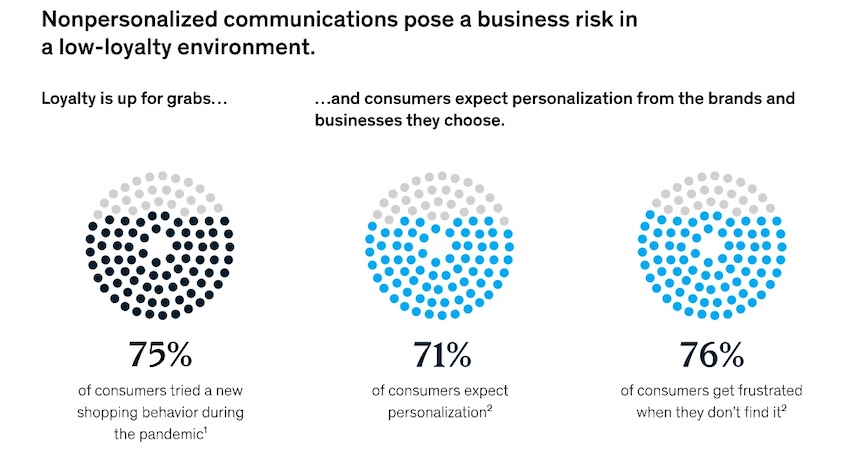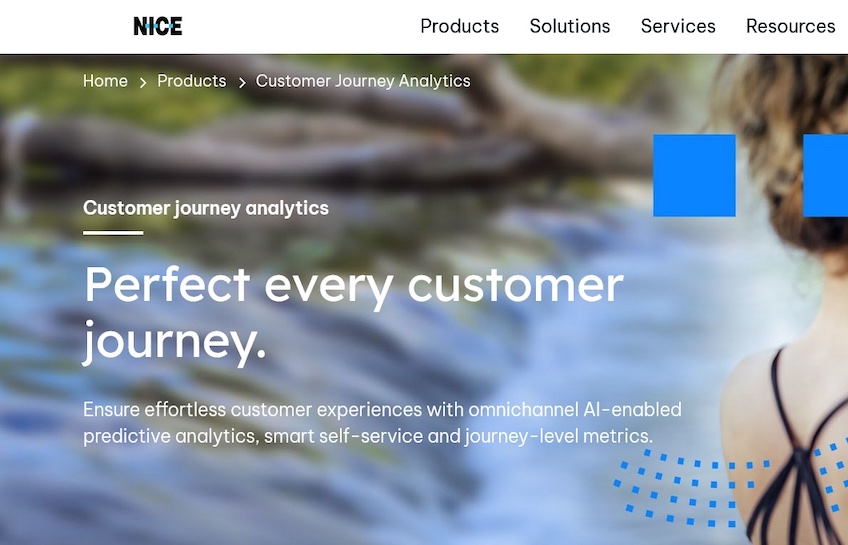Most customers who get on the phone with call centers don’t really care about the analytical jargon or omnichannel marketing intricacies behind how call centers operate. All they’re looking for is a solution to their problems without the hassle of contacting support lines over and over again.
That said, there are four core trends that genuinely enhance the customer experience, which call center leaders and organizations ought to keep in mind.
First-Call Resolution Focus
Why It’s New
First-Call Resolution (FCR) is trending because word-of-mouth travels faster than ever before. This means user reports of a single negative experience can move quickly on platforms like Twitter, Facebook, and Yelp—reaching thousands, if not millions, within hours.
According to ReviewTrackers, 94% of consumers admit that they’ve avoided a business after seeing a bad review online. That’s why getting things right on the first try is so valuable, because all online businesses are under the microscope.
How It Helps Customers
FCR shoots for efficient customer interactions straight away. Customers don’t want to spend their time being passed from one representative to another—especially when that means repeating their story over and over again. Unsurprisingly, research from Accenture found that 89% of customers get frustrated when they need to go over the same issues with multiple agents.
Achieving FCR means not only solving the customer’s issue promptly but also making sure that they don’t have to say it twice. This approach builds trust and demonstrates to customers that their time and business are genuinely valued.
How to Get Started
Implementing an effective FCR strategy starts with training agents to be ready with both answers and problem-solving skills. Consider running simulated training sessions that focus on common issues. These practice sessions can help agents anticipate problems and fine-tune their responses.
Next, although we poked some fun at overhyped analytics earlier, they can still be useful for identifying common customer pain points and making sure your team is prepared for them.
Furthermore, it’s important to give your agents some autonomy in making decisions. This might mean adjusting some company policies or introducing a tiered system where seasoned agents can handle more complex issues.
Lastly, remember that FCR is an ongoing process which requires regular feedback in order to make improvements. With each refinement, however, you can improve both your FCR rates and the overall customer experience.
Real-Time Feedback
Why It’s New
While traditional feedback mechanisms—such as post-service surveys and feedback forms—often result in data that’s outdated by the time it gets analyzed, we now have a lot of ways to leverage real-time data to make fast, educated decisions.
It’s no surprise, then, that the CMO Council found that the most important attribute of good customer experience (according to the customers themselves) is fast response times.

How It Helps Customers
While the speed of real-time feedback can be good on its own, it also shows that the company values the customer’s time. By immediately addressing concerns, businesses can demonstrate that they care about the individual customer’s experience.
At the end of the day, real-time feedback can make the difference between a customer feeling heard versus feeling like just another number—and that can make the difference between a customer writing a negative review and a customer who is happy with the service.
How to Get Started
The first step is to seek out platforms that you can use to offer immediate post-interaction customer surveys. These tools should integrate into your current systems without disrupting your team’s workflows.
Once those are in place, it’s important to act upon the data you collect. Train your agents to understand the value of feedback so they can encourage customers to share their experiences. You might want to consider incentivizing feedback with discounts or other engagement boosters to get a higher response rate.
Another key lies in the follow-up. Establish a dedicated team or protocol for addressing real-time concerns. Review this feedback regularly, looking for patterns or recurring issues, and adjust your strategies accordingly.
Self-Service Portals with AI Assistance
Why It’s New
No list of call center trends would be complete without referencing AI.
Yes, self-service portals have been giving modern consumers autonomy for a long time, but with the AI functionalities that are available today, self-help portals can now handle intricate issues that once required a human touch. This means that instead of just answering frequently asked questions, these juicers are offering nuanced solutions to unique customer challenges.
In a recent survey, 81 percent of customers affirmed their desire for more self-service options. Meanwhile, businesses estimated this number to be closer to 60 percent. Therefore, by integrating AI-driven capabilities into your customer self-service strategies, you can stay ahead of the curve while also giving customers more of what they want.
How It Helps Customers
Customers hate waiting to be helped. In fact, they hate it so much that they’d rather solve their own problems if it meant getting the job done faster.
Thus, it shouldn’t be surprising to hear that 90% of customers now expect organizations to have well-equipped self-service portals.

With AI-driven self-service portals, customers can bypass the dreaded hold music and find answers independently. But there’s also a safety net, because if they ever hit a roadblock, the AI system can promptly call a human representative for backup.
As it stands, there’s plenty of hype around AI in all industries, but the technology is here to stay in customer service. Servion Global Solutions has predicted that by 2025, 95% of all customer interactions will be powered by AI.
How to Get Started
Begin by researching and investing in a self-service portal solution that emphasizes AI capabilities. The market is rife with options, so focus your research on the ones that seem to gel with your company’s needs the most.
Once implemented, it’s crucial to prioritize user experience so that it’s intuitive. Otherwise, customers may abandon it due to a lack of confidence.
As you start implementing the AI rules, try to figure out which questions are most frequently asked and at which points users typically need to be transferred to a human agent. Analyzing this information will allow you to refine the AI’s learning process so that it becomes more proficient over time.
Additionally, you can also consider allowing users to share their experiences and suggest improvements directly within the portal.
Personalized Customer Interactions
Why It’s New
The concept of personalization has been around for some time, mostly due to the algorithms in place to keep our attention. For instance, Netflix can predict which shows we’d like to binge-watch next, and Amazon can make suggestions to forecast our next purchase.
As such, modern consumers all but expect this kind of service. A recent report by McKinsey found that 71% of consumers expect personalization and 76% of them get frustrated when they don’t find it.

Nevertheless, the call center industry is catching up with these trends by incorporating AI and machine learning.
How It Helps Customers
Personalized customer interactions eliminate the feeling of talking to a helpless robot. By replacing generic interactions, consumers can feel like the company knows them, values them, and understands their unique needs.
When businesses with call centers are able to offer a personalized approach, they also have the opportunity to recognize customers and provide them with relevant offers and recommendations. This approach leads to better problem-solving and more loyalty.
How to Get Started
The best way to begin is by integrating your CRM system with your call center software. This will give your representatives real-time access to customer data, as well as a holistic view of a given customer’s previous interactions and purchases.
Another step is to audit your current software systems. If they are not providing your agents with adequate information, consider upgrading or adding new integrations.
If your organization is large enough, you could even experiment with software tools like Predictive Behavioral Routing (PBR). This game-changing technique was first rolled out by Mattersight Corporation, which has since been acquired by NICE.

Rather than generic AI algorithms that say the same thing for everyone, PBR tries to understand and react to a caller’s unique personality model.
The goal is to match customers with agents who are best suited for their specific personality type. With any luck, customers will always speak to a representative who can resonate with them.
Final Thoughts
While it might be tempting to chase every new trend for your call center, it’s important to figure out which ones will matter to your customers. If you can understand their needs better, then you can make decisions that prioritize their experiences.
Of course, getting things right on the first attempt, in real-time, while offering personalized self-help solutions can’t hurt either.
